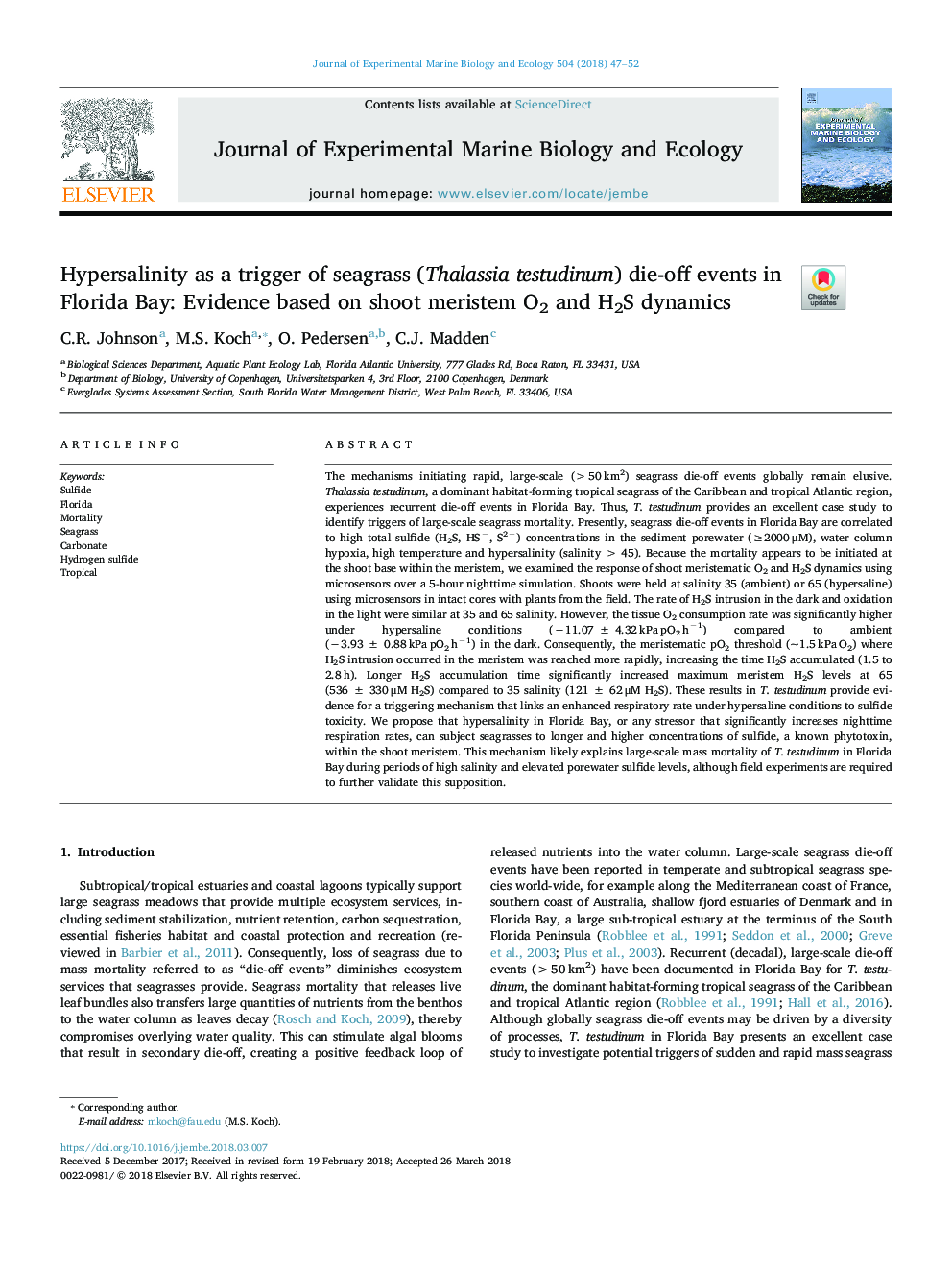| Article ID | Journal | Published Year | Pages | File Type |
|---|---|---|---|---|
| 8848913 | Journal of Experimental Marine Biology and Ecology | 2018 | 6 Pages |
Abstract
The mechanisms initiating rapid, large-scale (>50â¯km2) seagrass die-off events globally remain elusive. Thalassia testudinum, a dominant habitat-forming tropical seagrass of the Caribbean and tropical Atlantic region, experiences recurrent die-off events in Florida Bay. Thus, T. testudinum provides an excellent case study to identify triggers of large-scale seagrass mortality. Presently, seagrass die-off events in Florida Bay are correlated to high total sulfide (H2S, HSâ, S2â) concentrations in the sediment porewater (â¥2000â¯Î¼M), water column hypoxia, high temperature and hypersalinity (salinityâ¯>â¯45). Because the mortality appears to be initiated at the shoot base within the meristem, we examined the response of shoot meristematic O2 and H2S dynamics using microsensors over a 5-hour nighttime simulation. Shoots were held at salinity 35 (ambient) or 65 (hypersaline) using microsensors in intact cores with plants from the field. The rate of H2S intrusion in the dark and oxidation in the light were similar at 35 and 65 salinity. However, the tissue O2 consumption rate was significantly higher under hypersaline conditions (â11.07â¯Â±â¯4.32â¯kPaâ¯pO2â¯hâ1) compared to ambient (â3.93â¯Â±â¯0.88â¯kPaâ¯pO2â¯hâ1) in the dark. Consequently, the meristematic pO2 threshold (~1.5â¯kPaâ¯O2) where H2S intrusion occurred in the meristem was reached more rapidly, increasing the time H2S accumulated (1.5 to 2.8â¯h). Longer H2S accumulation time significantly increased maximum meristem H2S levels at 65 (536â¯Â±â¯330â¯Î¼M H2S) compared to 35 salinity (121â¯Â±â¯62â¯Î¼M H2S). These results in T. testudinum provide evidence for a triggering mechanism that links an enhanced respiratory rate under hypersaline conditions to sulfide toxicity. We propose that hypersalinity in Florida Bay, or any stressor that significantly increases nighttime respiration rates, can subject seagrasses to longer and higher concentrations of sulfide, a known phytotoxin, within the shoot meristem. This mechanism likely explains large-scale mass mortality of T. testudinum in Florida Bay during periods of high salinity and elevated porewater sulfide levels, although field experiments are required to further validate this supposition.
Related Topics
Life Sciences
Agricultural and Biological Sciences
Aquatic Science
Authors
C.R. Johnson, M.S. Koch, O. Pedersen, C.J. Madden,
